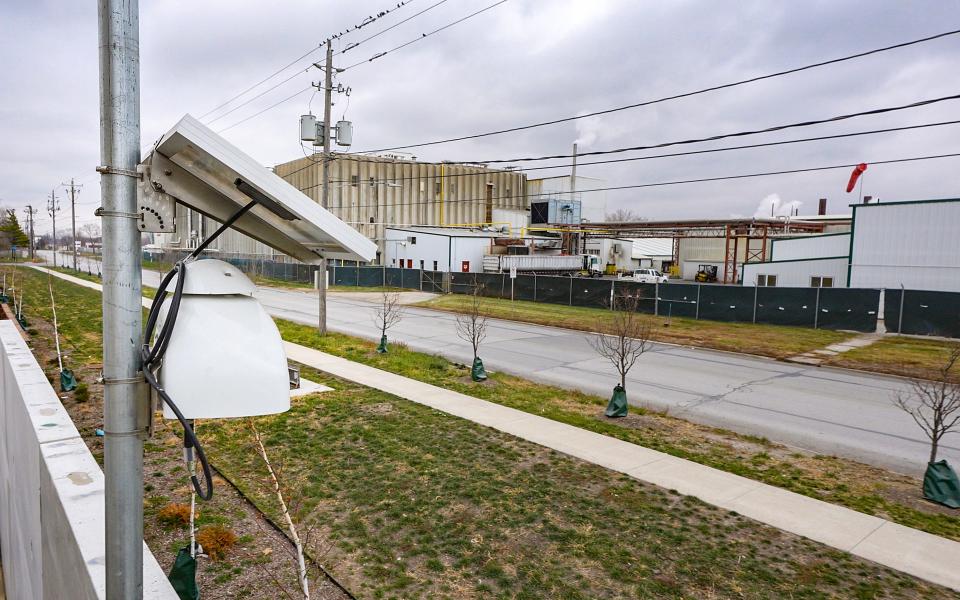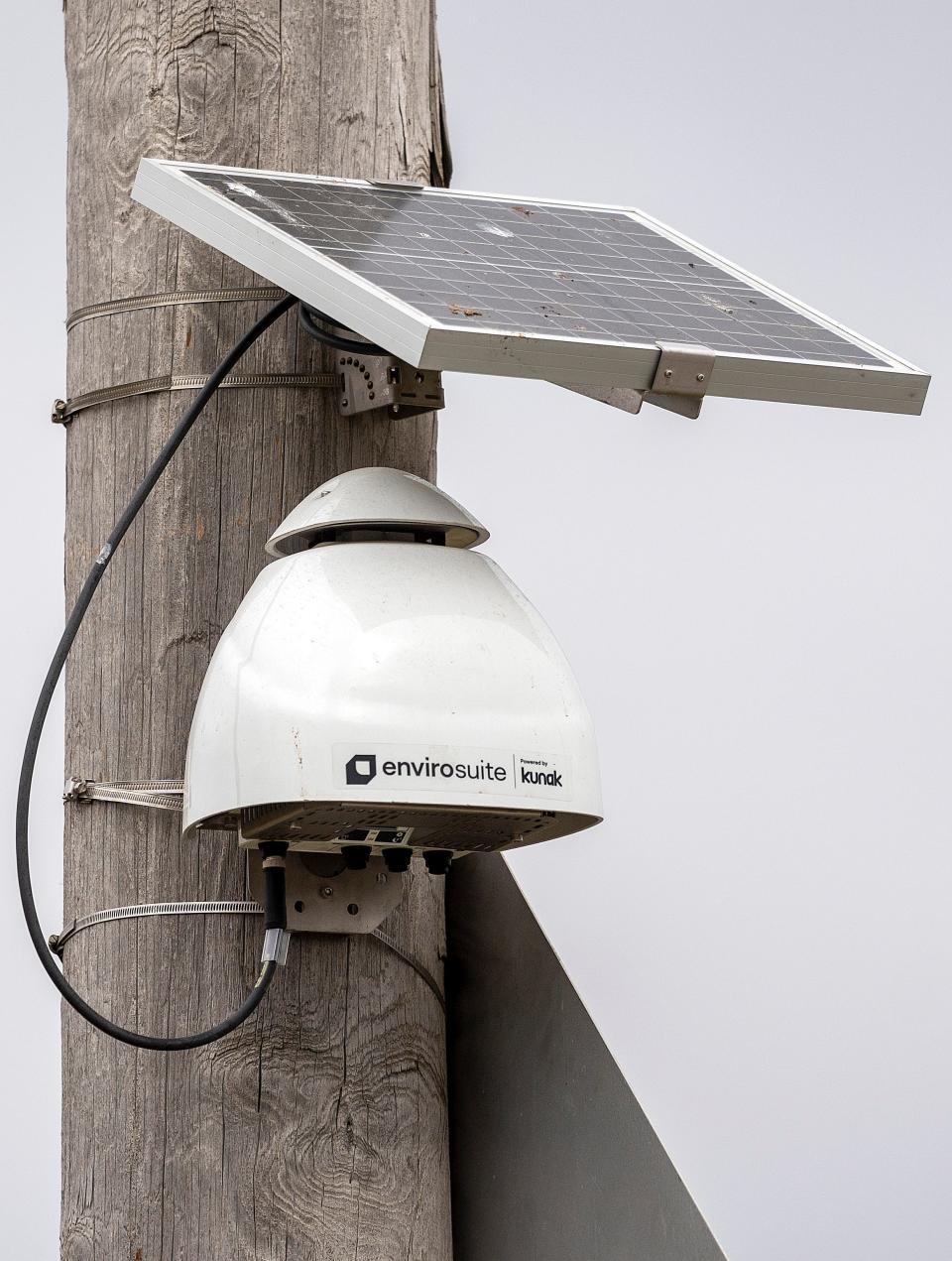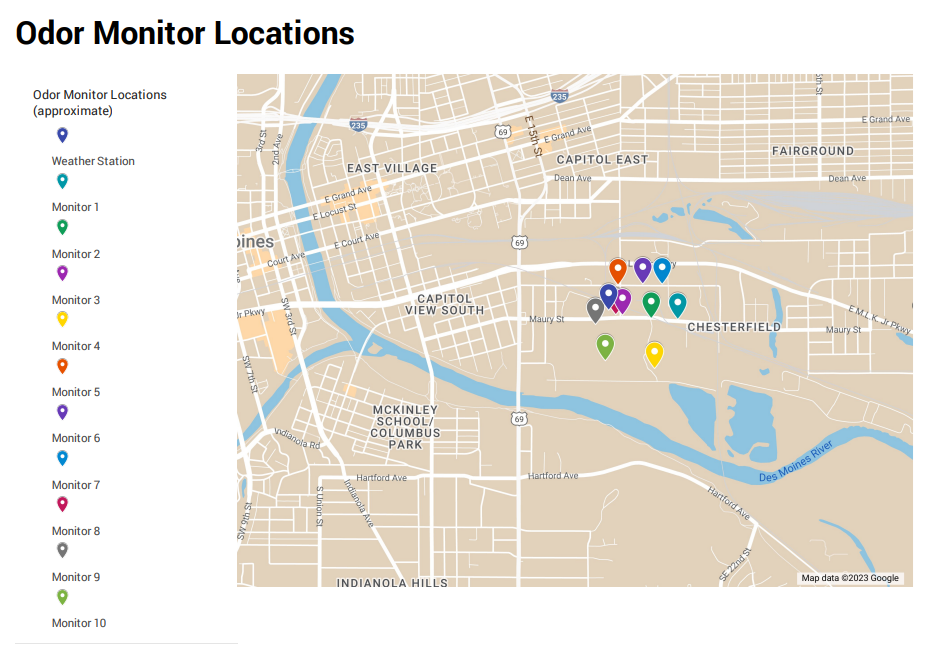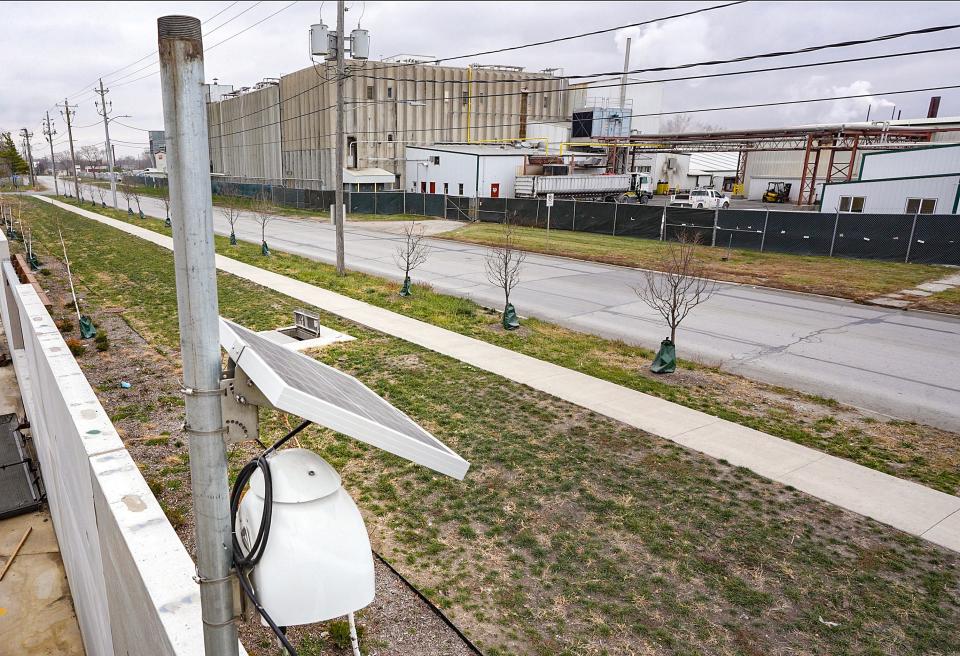Could 10 scientific odor monitors be the answer to Des Moines' long-running stench problem?
An odor monitoring system that can sniff out smelly chemical compounds is Des Moines' latest venture to try to stifle its decades-long stench problem.
People who live and work in downtown Des Moines have long complained about foul smells, and the city has had little success in getting the issue under control. In 2022, Des Moines officials hired an air quality consultant to conduct an $86,000 study that analyzed odor complaints from the past decade and mapped out likely sources of the city's stink problem — now determined to be three industrial meat businesses on Des Moines' east side.
The study also recommended the city use solutions such as purchasing devices for tracking odors and implementing an odor threshold that would prompt businesses to take action if smells reach a certain level.
City officials in October installed 10 odor monitors from Envirosuite, an environmental intelligence platform. The technology, purchased for $110,000 after Des Moines City Council approval in August, measures and logs data based on odor-producing chemicals.
Neighborhood Inspections Administrator Dalton Jacobus says the data gathered from the technology over the next six months will be used to guide future odor policies and set threshold limits for odor emissions from industrial facilities.
Though Des Moines' stink problem is not a public health issue, Jacobus says the city's goal is to address quality-of-life issues through the program.
"I mean, it's huge. It's really huge," he said of the technology. "By improving odors by a little bit, we're going to impact the lives of hundreds of thousands of people."

How do the new odor monitors in Des Moines work?
The odor monitors, which have been live for about six weeks, measure the levels of chemical compounds in the air, such as ammonia, hydrogen sulfide and volatile organic compounds, Jacobus said.
The monitors send the information to a database, where it's combined with the city's weather and odor complaint data to show more precise information on aspects such as where the odors are coming from and where they're headed, he said.
Jacobus says the approach is meant to be more proactive and data-driven than a scentometer, a device that measures odors by the number of times the air would have to be diluted to make it smell like there's no odor. The study had recommended a scentometer, but Jacobus says it would have presented data less frequently and potentially less accurately.
The odor monitor devices, which are powered by a solar panel, will provide continuous data on smells coming from the odor emitters in real time, according to a news release from the city. The devices connect to the Envirosuite platform via a 5G cell connection.

Where are the odor-tracking devices in Des Moines?
The monitors are in 10 locations around the three main odor emitters identified by the study: Darling Ingredients, a rendering plant; Pine Ridge Farms, a pork packing plant; and Wiechman Pig Co., a swine-buying and transfer station, according to the city.
More: Des Moines tries new approach to stifle its ceaseless stench problem
The three industrial meat businesses are all on the east side of the city.
The devices are attached to utility poles at several spots around the city’s Municipal Service Center 2, on Maury Street, and a weather station is mounted on the rooftop of the service center, according to the city.

How has Des Moines tracked its smells in the past?
For decades, city action on odor problems has been prompted by reporting bad smells to the city's odor hotline. If 10 complaints were received within a six-hour period, a neighborhood services inspector was sent to do a sniff test.
If the inspector determined a specific facility or business has been the source of an odor alert three times in a 90-day period, the source of the smell was labeled a significant odor generator, and the company was directed to create a mitigation plan.
No business has reached that level in 20 years or more, SuAnn Donovan, Des Moines' former deputy director of the Neighborhood Services Department, previously told the Register.
Chris Reindl, a neighborhood services inspector supervisor, previously told the Register the process triggered by complaints is subjective and unscientific.
City staff members receive about 200 odor complaints a year, and most of the odors are described as a "putrid rotting smell, meat cooking and sewage," according to the study.
About 70% to 80% of the odor complaints come in when the wind direction is south, east or southeast, wafting scents into areas like the East Village, downtown and up to the Drake neighborhood.

What's next? Fact-finding, seeking to gain voluntary compliance
Jacobus says the neighborhood inspections team will be on a "fact-finding" mission over the next six months to determine what's causing the odors, whether it's the compounds themselves or whether factors such as wind direction, barometric pressure or time of day play a role.
The information will be brought back to the City Council, along with recommendations for possible ordinance changes to improve the conditions.
"So, I think that people might say, 'What the heck? We're doing another study?'" Jacobus said. "We're not doing another study. We did a study and we've identified where the issue is. Now we're measuring exactly ... what that issue looks like compared with weather data and complaint data."
While the study could dictate the city's action on establishing an ordinance, Jacobus stressed that the city's goal is to gain "voluntary compliance." And in the long term, he said, enforcement should be triggered by a data-driven ordinance rather than just complaints, he said.
"We don't necessarily want enforcement. We want an improvement in quality of life," he said.
Enforcement efforts will be paused over the next several months while the city collects data, though Des Moines residents are encouraged to continue reporting foul smells to the Odor Complaint Form at dsm.city/odor, or by calling the odor hotline at 515-248-6367, according to the city.
In the meantime, Jacobus says the three facilities identified as the source of the foul smells have continued to "engage" with the city on how to improve the facilities.
Wiechman Pig Co., for example, has changed its operations, and the odors emitted from its site "have largely disappeared," he said.
Ray Atkinson, external communications director for Smithfield Foods, Pine Ridge Farms' parent company, told the Register in an email that based on ongoing monitoring, the company does not believe odors noted in recent complaints are coming from its Des Moines facility.
The company plans to invest $2 million to install a regenerative thermal oxidizer, which destroys volatile organic compounds and reduces up to 98% of odors. That step has had "excellent results" at other Smithfield facilities, Atkinson said. The equipment is expected to arrive at the Des Moines facility in December.
"Smithfield also purchased the same type of odor monitoring equipment that has been used by the city of Des Moines, and we are using it to monitor the area around our facility," he added.
Jacobus agreed Smithfield has invested "quite a bit of capital" into odor management, calling the effort "very impressive."
Virginia Barreda is the Des Moines city government reporter for the Register. She can be reached at vbarreda@dmreg.com. Follow her on Twitter at @vbarreda2.
This article originally appeared on Des Moines Register: Des Moines installs odor monitors to address its decades-long stench

